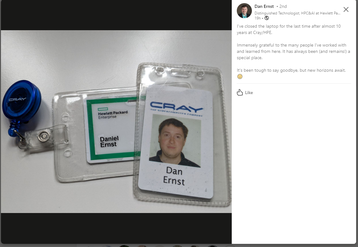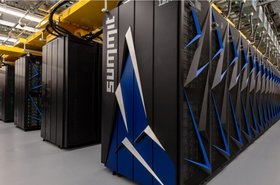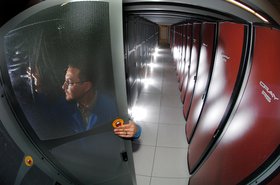Dr. Daniel Ernst has left HPE Cray, becoming the latest to depart the supercomputing company after it was acquired by HPE in 2019.
Ernst was a Distinguished Technologist in the HPE HPC and Mission Critical Systems Advanced Technology team, who led investigations into future HPC architectures.
A high-performance memory systems expert, Ernst represented HPE and Cray at JEDEC and on the CCIX Consortium, and is a founding board member of the Gen-Z consortium.
He was also the co-lead of Cray's PathForward program, and part of Cray's exascale project with the Department of Energy.
How many before it becomes a pattern?
"I've closed the laptop for the last time after almost 10 years at Cray/HPE," Ernst said in a LinkedIn post.
"Immensely grateful to the many people I've worked with and learned from here. It has always been (and remains!) a special place. It's been tough to say goodbye, but new horizons await."
Ernst did not reveal where he planned to work next after a decade at Cray, but replies to other LinkedIn users indicate it will still be in the high-performance computing field. Update: Ernst has moved to Microsoft.
His departure is just the latest in a string of similar exits since HPE acquired Cray for $1.3 billion in cash, and comes as cloud computing has increasingly begun to serve the same customers as bespoke HPC solutions.
In 2020, Cray's CTO Steve Scott left to take up a position at Microsoft. Soon after, Joe Landman, part of HPE’s HPC solutions engineering R&D group, jumped over to Jump Trading LLC.
This year, Cray's CEO Pete Ungaro stepped down, as did senior software engineer David Greene, now at Cerebras Systems. A number of other 'Crayons' at different levels of seniority have also left.
Despite this, HPE Cray still has a promising lineup of supercomputers on the way, notably the entirety of the US government's exascale line-up. Aurora, Frontier, and El Capitan will all use Cray's Shasta architecture.




